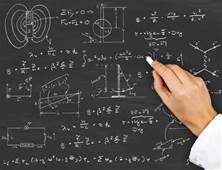 |
Facts
Duration: 1 semester
Period: Fall (3) Semester
Credits: 3 ECTS
Contact Hours: 32
Self-study: 148
Hours: 180
|
Main Objectives
Construction and investigation of mathematical models of telecommunication flows, systems and networks
Learning Outcomes
- Know various methods of investigation of queueing networks (the method of asymptotic analysis, the method of raw moments, the method of dynamic screening method of the first jump separation), methods of constructing and solution of the systems of Kolmogorov differential equations to obtain the probability distribution for the main characteristics of the system.
- Be able to apply these methods to the study of queueing networks with specific configurations, use software packages (Mathcad, MatLab) to obtain numerical results and performing simulations.
- Possess the basic concepts of the theory of random processes, random flows and queueing theory in terms of their application to the study of models of the telecommunication networks.
Professor
Alexander Moiseev
Course annotation
|
Course unit code |
01.04.02 – Applied mathematics and computer science |
||||||
|
Course unit title |
Mathematical Modeling of the Telecommunication Networks |
||||||
|
Name(s), surname(s) and title of lecturer(s) |
Alexander Moiseev |
||||||
|
Level of course |
Master |
||||||
|
Semester |
3 |
||||||
|
ECTS credits |
5 |
||||||
|
Working hours |
Contact hours |
32 |
|||||
|
lectures |
32 |
||||||
|
seminars |
|||||||
|
practical classes |
|||||||
|
laboratory classes |
|||||||
|
consultations |
|||||||
|
Independent work |
148 |
||||||
Total |
180 |
||||||
|
Work placement |
none |
||||||
|
Language of instruction |
English |
||||||
|
Prerequisites |
Mathematical Analysis, Linear Algebra, Differential Equations, Probability Theory and Mathematical Statistics, Theory of Stochastic Processes, Queueing Theory |
||||||
|
Objectives of the course |
Learning outcomes |
A student’s assessments methods |
|||||
|
Construction and investigation of mathematical models of telecommunication flows, systems and networks |
|
Presentations, exam. |
|||||
|
Teaching methods |
Lectures, group work, individual presentations, self-study |
||||||
|
Course unit content |
Title |
Lecturers (hours) |
Self-study (hours) |
||||
|
Mathematical models of telecommunication networks. The general model of queueing network. High-intensive flows (point processes) |
2 |
4 |
|||||
|
Study of the high-intensive renewal process |
2 |
4 |
|||||
|
Study of the high-intensive MAP and MMPP processes |
2 |
6 |
|||||
|
Study of the high-intensive semi-Markov process |
2 |
4 |
|||||
|
Study of the queueing system G/G/∞ by means of the dynamic screening method |
2 |
6 |
|||||
|
Study of the queueing systems MAP/G/∞ and MMPP/G/∞ |
2 |
8 |
|||||
|
Study of the queueing system SM/G/∞ |
2 |
6 |
|||||
|
Study of the queueing system G/G/∞ by means of the first jump separation method |
2 |
6 |
|||||
|
Study of the queueing system G/G/∞ by means of the raw moments’ method |
2 |
6 |
|||||
|
Tandem (multi-stage) queueing systems. Investigation of the tandem queueing system G/(G/∞)K by means of the multi-stage dynamic screening method |
2 |
6 |
|||||
|
Investigation of the tandem queueing systems MAP/(G/∞)K and MMPP/(G/∞)K |
10 |
||||||
|
Investigation of the tandem queueing system SM/(G/∞)K |
8 |
||||||
|
Investigation of the tandem queueing system G/(G/∞)K by means of the method of the first jump separation and the method of raw moments |
2 |
8 |
|||||
|
Infinite-server queueing networks. Investigation of the queueing network G–(G/∞)K by means of the multi-dimensional dynamic screening method. Special aspects of the application of the first jump separation method and the raw moments’ method for study of the queueing networks |
2 |
12 |
|||||
|
Investigation of the queueing networks MAP–(G/∞)K and MMPP–(G/∞)K |
2 |
16 |
|||||
|
Investigation of the queueing network SM–(G/∞)K |
10 |
||||||
|
The application of the results of the analysis of the infinite-server queueing models for the constructing of the real telecommunication networks and systems of distributed data processing. The optimal number of servers. Calculation of the probability that a Gaussian vector falls in the hyperellipsoid with the uniform density |
4 |
16 |
|||||
|
Special aspects of the construction of simulation models of the infinite-server queueing networks. The concept of the third-order asymptotic form. Determining of the region of the applicability of the asymptotic results |
2 |
12 |
|||||
|
32 |
148 |
||||||
|
Assessment requirements |
Quality of presentation of individual work, answer on exam. |
||||||
|
Assessment criteria |
Volume of the performed individual research. Quality and volume of the answer on exam |
||||||
|
The composition of final accumulative mark |
Final accumulative mark consists of: 2 individual presentations – each for 25%, 2 question on exam – each for 25%. |
||||||
|
Course outline arranged by |
Alexander Moiseev |
||||||
.png)